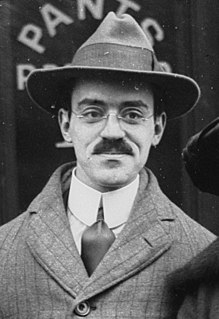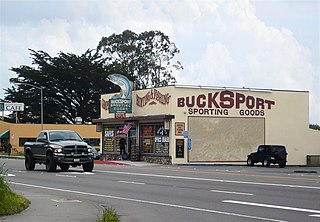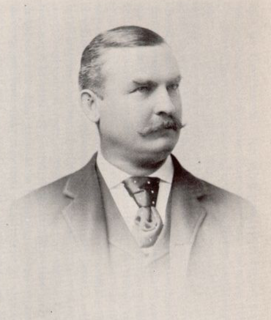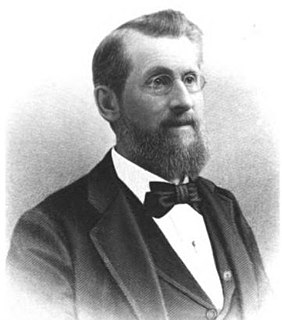Publications
Anticipating the need for an economical logging newspaper in the South, Hatton-Brown launched Loggin' Times (later titled Southern Loggin' Times ) in 1972. In late 1974, sensing a change in the nature of the traditional pulpwood market, management decided to phase in a new name for Pulpwood Production & Saw Mill Logging . The latter part of the title was dropped and replaced with the words, Timber Harvesting. The journal carried a double title until it went national in 1977 and became more fittingly known as Timber Harvesting . In 1977 Timber Processing Industry , (later shortened to Timber Processing ) began as a regional tabloid newspaper for the sawmill Industry and remained so until 1978. In 1979 Timber Processing became a national sawmill magazine.
In 1981 Charles Cline retired and David Ramsey and David Knight became the new owners. Ramsey and Knight formed a new corporation Hatton-Brown Publishers, Inc. Dianne Sullivan became secretary of the corporation, and was named general manager and joined the owners on the board of directors.
In June of that year the company moved from 458 S. Lawrence St. to larger facilities at 610 S. McDonough St.
In 1981 David Ramsey, David Knight and some key employees of Hatton-Brown purchased another publication. A separate corporation, Plywood and Panel World, Inc., was formed to purchase a magazine known as Plywood & Panel . This journal, officially acquired in January 1982, was subsequently renamed Plywood & Panel World and later Panel World .
Hatton-Brown has also published the official program for various logging equipment expositions through the years. Some of which included: Timber Harvesting Expo-SE in south Georgia and Carolina Log'n Demo in eastern North Carolina.
In late 1988, with employment practically double the number of 1981, the company owners elected to build a new and larger office building at the corner of Clay and Hanrick Streets in Montgomery. The building was completed and occupied in April 1990. The official open house followed on June 7, 1990.
Hatton-Brown diversified its publishing interests in January 1991 by acquiring its first non-forestry or paper related title, Chain Saw Age & Power Equipment Trade . To position the publication for expanded outdoor power equipment advertising opportunities, the company in January 1992, officially changed the publication's title to Power Equipment Trade .
In 1995 Hatton-Brown purchased its first consumer publication, IronWorks , a nine-times-per-year upscale magazine appealing to Harley-Davidson motorcycle enthusiasts. Dennis Stemp, founder of the magazine remained as editor until his death.
Hatton-Brown purchased another wood products magazine, Southern Lumberman , in late summer of 1999. This publication has been published under this title since 1881, making it the oldest forestry related trade magazine in the country.

Logging is the process of cutting, processing, and moving trees to a location for transport. It may include skidding, on-site processing, and loading of trees or logs onto trucks or skeleton cars.

Plywood is a material manufactured from thin layers or "plies" of wood veneer that are glued together with adjacent layers having their wood grain rotated up to 90 degrees to one another. It is an engineered wood from the family of manufactured boards which include medium-density fibreboard (MDF) and particle board (chipboard).

Lumberjacks are mostly North American workers in the logging industry who perform the initial harvesting and transport of trees for ultimate processing into forest products. The term usually refers to loggers in the era when trees were felled using hand tools and dragged by oxen to rivers. The work was difficult, dangerous, intermittent, low-paying, and involved living in primitive conditions. However, the men built a traditional culture that celebrated strength, masculinity, confrontation with danger, and resistance to modernization.
Portable sawmills are sawmills small enough to be moved easily and set up in the field. They have existed for over 100 years but grew in popularity in the United States starting in the 1970s, when the 1973 oil crisis and the back-to-the-land movement had led to renewed interest in small woodlots and in self-sufficiency. Their popularity has grown exponentially since 1982, when the portable bandsaw mill was first commercialized.

Peterbilt Motors Company is an American truck manufacturer. Producing its first truck in 1939, the company specializes in commercial heavy-duty and medium-duty vehicles. Since 1958, Peterbilt has been owned by PACCAR, operating alongside sister division Kenworth Truck Company. Introduced in 1953, a large red-oval brand emblem distinguishes its vehicles.

Louisiana-Pacific Corporation, commonly known as "LP", is an American building materials manufacturer. It was founded in 1973 and is currently based in Nashville, Tennessee. LP pioneered the U.S. production of oriented strand board (OSB) panels. Today, LP is the world's largest producer of OSB, and manufactures engineered wood building products. LP products are sold to builders and homeowners through building materials distributors and dealers and retail home centers.

The Sandy River & Rangeley Lakes Railroad (SR&RL) was a 2 ft narrow gauge common carrier railroad that operated approximately 112 miles (180 km) of track in Franklin County, Maine. Former equipment from the SR&RL continues to operate in the present day on a revived, short segment of the railway in Phillips, Maine.

In woodworking, veneer refers to thin slices of wood and sometimes bark, usually thinner than 3 mm, that typically are glued onto core panels to produce flat panels such as doors, tops and panels for cabinets, parquet floors and parts of furniture. They are also used in marquetry. Plywood consists of three or more layers of veneer. Normally, each is glued with its grain at right angles to adjacent layers for strength. Veneer beading is a thin layer of decorative edging placed around objects, such as jewelry boxes. Veneer is also used to replace decorative papers in Wood Veneer HPL. Veneer is also a type of manufactured board.

.info was a computer magazine covering Commodore 8-bit computers and later the Amiga. It was published from 1983 to 1992.
The following outline is provided as an overview of and guide to forestry:
James Playfair was noted for his entrepreneurship in the Great Lakes shipping, lumbering, grain handling, and industrial manufacturing businesses. He was a central figure in the establishment of Midland, Ontario, Canada. The son of John Speirs Playfair and Georgina Hall of Montreal, in 1889 Playfair married Sarah Charlotte Ogilvie (1858-1945), youngest daughter of Senator A.W. Ogilvie of Montreal, former president of Ogilvie Flour Mills.
The Great Southern Lumber Company was chartered in 1902 to harvest and market the virgin longleaf pine forests in southeastern Louisiana and southwestern Mississippi. Bogalusa, Louisiana was developed from the ground up as a company town and was the location for Great Southern Lumber Company's sawmill, which began operation in 1908. Other company interests included a railroad and paper mill. The company ceased operation in 1938, when the supply of virgin pines was depleted. Bogalusa became the site of a paper mill and chemical operations, followed by other industry.
Thomas John Autzen was a Danish-American pioneer in plywood manufacturing, and founder of a family-run philanthropic foundation known as the Autzen Foundation, based in Portland, Oregon. The Autzen Foundation supplied the single largest donation, US$250,000, to support the construction of the football stadium at the University of Oregon in Eugene that bears his name. Construction began in 1966, eight years after his death, and was completed in 1967. Autzen's heirs, led by his son Thomas E. Autzen, operated the foundation after his death, per the terms of his will.
The timber industry is a significant contributor to the economy of Russia, worth around 20 billion dollars per year. Russian Forest Industry - a set of Russian industries related to wood harvesting and processing. One of the oldest sectors of the economy.

Forests cover about one-third of Ghana's total area, with commercial forestry concentrated in the southern parts of Ghana.

Ax Men is an American reality television series that premiered on March 9, 2008 on History. The program follows the work of several logging crews in the second-growth forests of Northwestern Oregon, Washington and Montana and the rivers of Louisiana and Florida. The show highlights the dangers encountered by the loggers. Following in the footsteps of other shows from Original Productions, like Deadliest Catch and Ice Road Truckers, the series is considered part of a recent "real-men-in-real-danger" television programming trend.

Harold Brainerd Hersey was an American pulp editor and publisher, publishing several volumes of poetry. His pulp industry observations were published in hardback as Pulpwood Editor (1937).

Bucksport was a town in Humboldt County, California. The original location was 2.5 miles (4 km) southwest of downtown Eureka, on Humboldt Bay about 5 miles (8 km) northeast of entrance. at an elevation of 16 feet (4.9 m). Prior to American settlement a Wiyot village named Kucuwalik stood here.

Charles Waterhouse Goodyear was an American lawyer, businessman, lumberman, and member of the prominent Goodyear family of New York. Based in Buffalo, New York, along with his brother, Frank, Charles was the founder and president of several companies, including the Buffalo and Susquehanna Railroad, Great Southern Lumber Company, Goodyear Lumber Co., Buffalo & Susquehanna Coal and Coke Co., and the New Orleans Great Northern Railroad Company.

George Woodward Hotchkiss was a nineteenth-century pioneer lumber dealer businessman and journalist who wrote on the lumber industry. He was the co-founder and editor of several newspapers, including the world's first lumber journal Lumberman's Gazette. He helped publish a lumber trade manual that sold 40,000 copies. Hotchkiss is considered the father of lumber periodicals.













